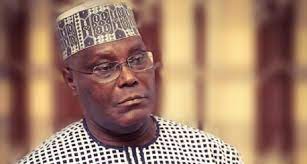News
Breaking: Nigeria’s unemployment rate increased by 0.8% in Q3, 2023

For the third quarter of 2023, the unemployment rate surged to 5.0%, marking a notable increase from the 4.2% recorded in Q2 2023. Among men, the unemployment rate stood at 4.0%, while among women, it was 6.0%.
Geographically, urban areas reported a 6.0% unemployment rate compared to 4.0% in rural regions. Youth faced a particularly high unemployment rate of 8.6%.
Regarding educational attainment, the unemployment rates varied: 7.8% among individuals with post-secondary education, 6.3% for those with upper secondary education, 5.5% for those with lower secondary education, 4.8% for those with primary education, and 2.7% for those with no formal education.
Informal employment
In Q3 2023, the proportion of employed individuals engaged in informal work decreased to 92.3%, down by 0.4% from the previous quarter’s 92.7%. Notably, women exhibit a substantially higher rate of informal employment compared to men.
Rural areas reported a higher prevalence of informal employment, with 97.2% of residents involved, while urban areas estimated an informality rate of 87.5%. Females are disproportionately represented in informal employment compared to males.
Self-employment
For the quarter under review, 87.3% of employed Nigerians were predominantly self-employed, while the remaining 12.7% worked primarily as employees.
In terms of gender breakdown, 90.5% of women were self-employed, contrasting with 84.2% of men in similar roles.
Urban areas showed a lower proportion of self-employed individuals, with 80.3% engaged in such work, whereas rural areas exhibited a higher rate of 94.5% among the employed.
Labour force participation
During Q3 2023, Nigeria’s labour force participation rate stood at 79.5%, down from 80.4% in Q2 2023. Men exhibited a participation rate of 80.9%, while women had a rate of 78.2%. Residents in rural areas were more inclined to participate in labour activities compared to their urban counterparts.
In the same period, 75.6% of Nigeria’s working-age population was employed. Among males, the employment-to-population ratio was 77.7%, whereas among females, it was 73.5%.
Urban areas reported an employment-to-population ratio of 71.1%, whereas rural areas demonstrated a higher ratio of 80.7%.


 Top Stories19 hours ago
Top Stories19 hours agoTinubu’s Aide Condemns Plan To Reinstall ‘Jesus Is Not God’ Banner In Lekki Mosque

 Top Stories14 hours ago
Top Stories14 hours agoBreaking: FIRS Announces Fresh Recruitment, See Eligibility Criteria, Application Deadline

 News19 hours ago
News19 hours agoPetrol To Sell ₦935/Litre From Today – IPMAN

 Top Stories16 hours ago
Top Stories16 hours agoPrimate Ayodele’s Prophecies For 2025

 Top Stories19 hours ago
Top Stories19 hours ago2025 Budget Cannot Address Nigeria’s Economic Challenges – Atiku

 Entertainment19 hours ago
Entertainment19 hours agoI will be more influential in Nigeria than UK – Tobi Adegboyega

 News19 hours ago
News19 hours agoPresident Tinubu’s reforms not responsible for food stampedes – FG








